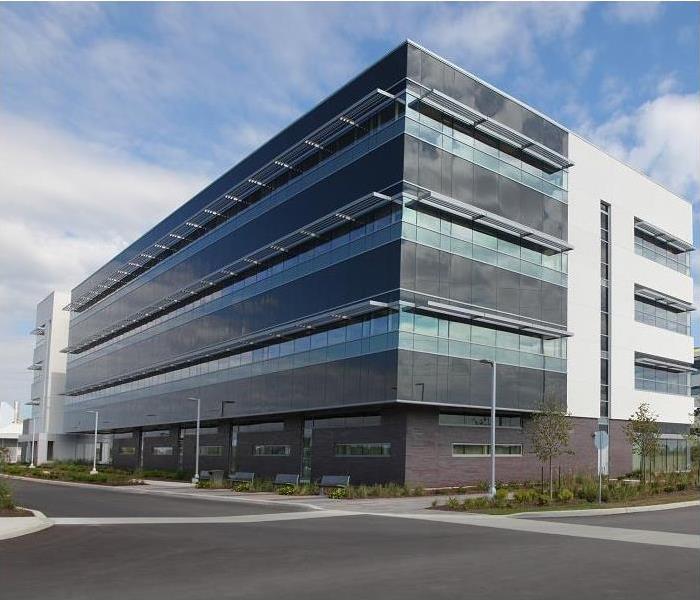What Caused Water Damage in My Queens Office Building?
5/6/2020 (Permalink)
Our SERVPRO team can thoroughly inspect the damaged area to find the source of water damage and restore the damage it caused.
Water damage is not always as cut-and-dry as you might believe. Addressing these concerns begins by identifying the source of the damage, which can sometimes hide behind layers of a wall system or ceiling materials. In some situations, you might not be sure that a water loss incident exists until you can recognize some of the symptoms these incidents can leave behind.
When you suspect water damage to your Queens office building, you want to resolve this threat soon. Prolonged exposure to moisture or damp, structural elements allows for more compromising effects like deterioration or mold growth. Our SERVPRO professionals have a fast and thorough response that can help you to not only identify water losses and moisture, but dry up this damage to make it “Like it never even happened.”
How Do You Identify Subtle Water Damage?
When you are not sure that a water loss incident exists, how can you know for sure? Several indicative symptoms can showcase water or moisture, even if the majority of this damaged area exists behind surface materials in wall cavities or structural openings. You can start by looking for:
- Yellowing – Drywall is one of the most common structural materials used in office spaces. While you do not typically have to worry about the metal framework becoming damaged by water, drywall can quickly and readily absorb moisture and water from a persistent leak. The surface around this water-damaged area of the sheetrock can often show yellowing in an uneven blotch.
- Spotting - Prolonged exposure to moisture, or the unresolved saturation of materials, can facilitate mold growth in areas that you cannot see. The migration of mold colonies can show as spotting on the surface of the drywall, which can be multiple colors: black, green, blue, or even orange.
- Material Deterioration – Sagging or damaged materials are often an excellent indication of water damage. As materials get saturated, they can become too heavy for screws or nails used to install them to support them. Sagging ceilings or bloated wall surfaces can indicate a substantial water loss concern.
Is Professional Restoration Needed for Damp Drywall?
With drywall being such a standard element to your entire office space, restoring it after a water loss is something that you want to address immediately. Because these materials can become irreparably damaged in often as little as 24 hours of exposure, controlled demolition and reconstruction is often the fastest and most reliable approach for overcoming damp drywall. Our SERVPRO professionals can help with restoring these damaged areas and elements in the office, as sheetrock can be a considerable challenge due to:
- Structural Deterioration – Exposure to migrating water or moisture in any area of your office can allow for the bloating and deterioration of drywall surfaces.
- Porous Surfaces – The sheetrock’s permeance and porosity make it one of the most susceptible structural elements to moving water or the presence of moisture in the environment.
- Facilitate Mold Growth – Because drywall is an organic material, it can be a host for developing mold colonies.
Is Damage Assessment Worth the Wait to Start Mitigation?
When you believe that there is a problem with your office building, you owe it to your staff and your customers to address it as soon as possible. Rushing to get this done, however, might not be the best decision. A pre-job damage assessment conducted by our project manager can ultimately make the restoration more efficient and direct with accurate information and the appropriate recovery tools. Scoping a restoration project before it starts is helpful because:
- Identify Existing Problems – Noting all the existing problems with our SERVPRO DryBook Software can keep our technicians, our customer, and their insurance company all on the same page regarding what must happen and the progress of our restoration process.
- Content Assessment – Your office has many valuable items from its commercial-grade equipment and electronics, to individual desks, chairs, and other furniture. Our professionals can assess the damage to each of these items individually.
- Recognize moisture Beyond the Surface – With sophisticated technologies and tools, such as thermal imagery and surface moisture meters, we can identify the presence of moisture pockets even beyond surface materials.
- Label Pre-Existing Conditions - By meeting with the property manager of your office, we can determine areas that might have already been damaged or compromised before water losses. Directing our technicians at this loss incident alone can save time and money.
No matter how subtle or blatant water losses might initially appear, they all must get addressed with effective drying and cleaning approaches as soon as possible. Our SERVPRO of Long Island City can help 24/7 by calling (718) 440-6994.
More about Queens.






 24/7 Emergency Service
24/7 Emergency Service
